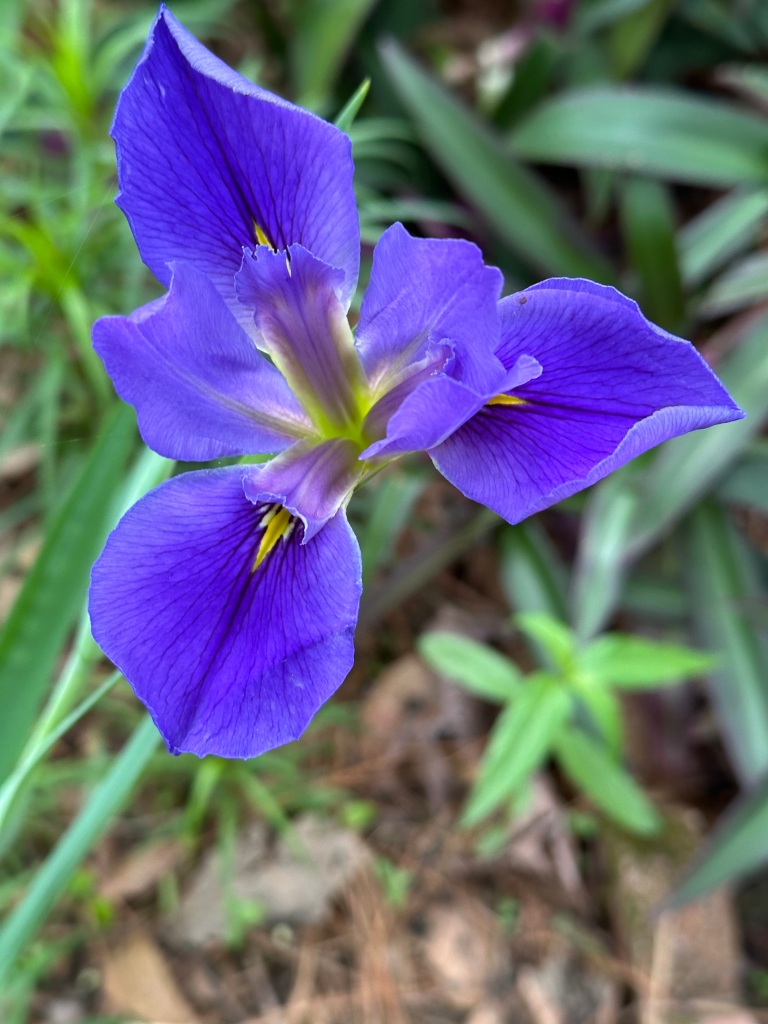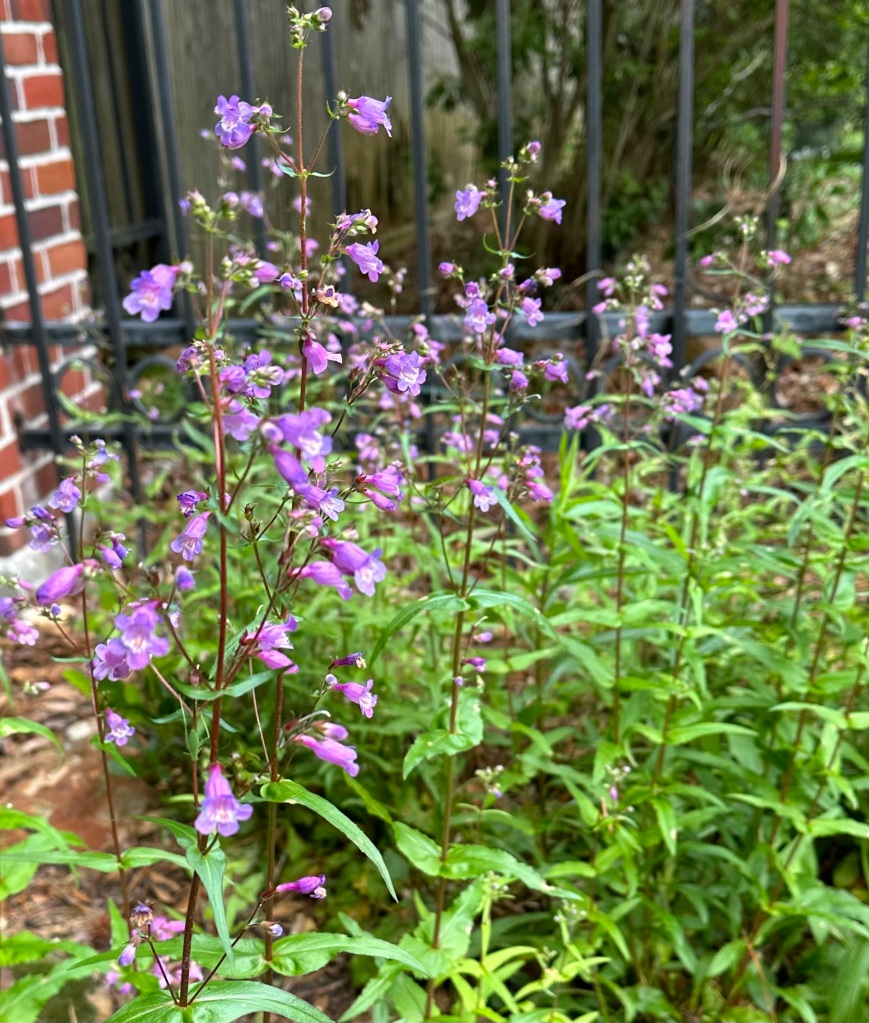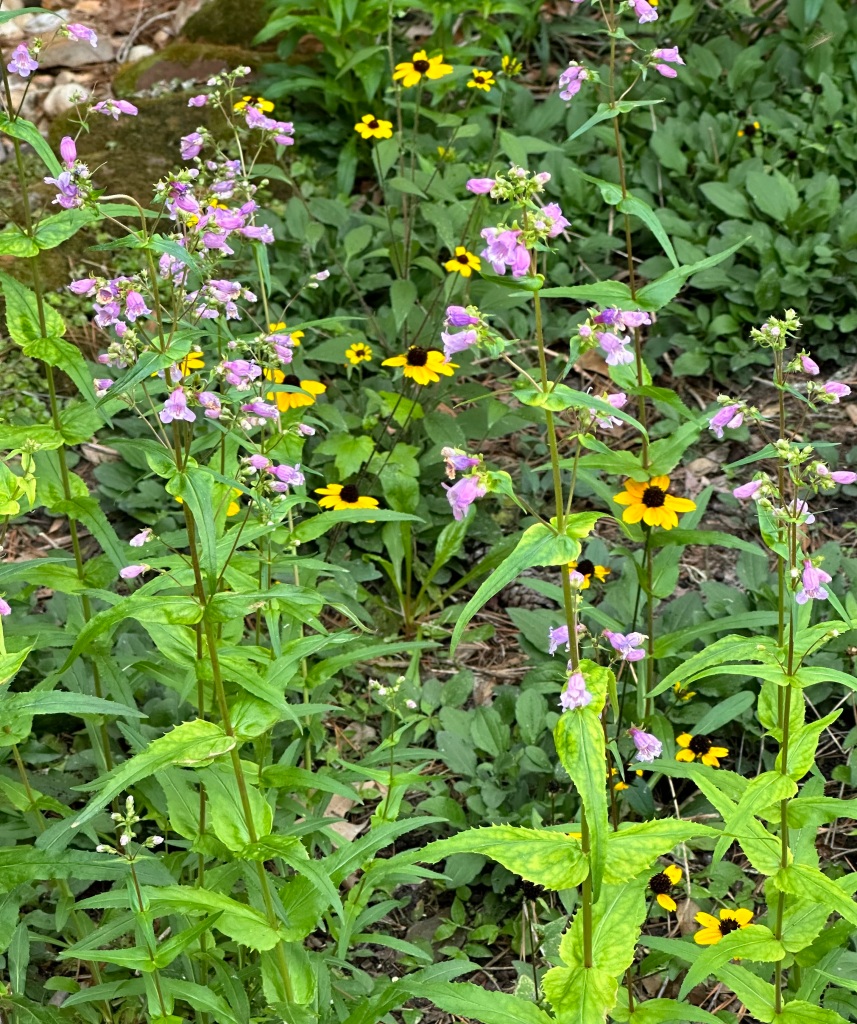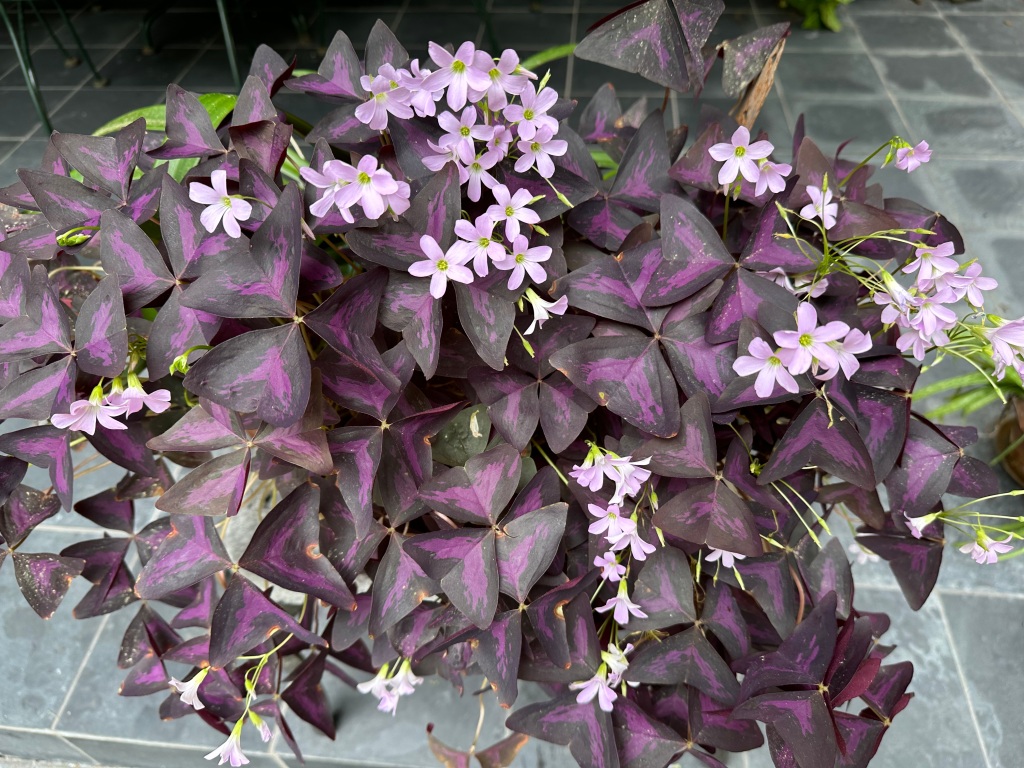Finally Flowers!
Posted: April 1, 2024 Filed under: Gardening | Tags: African Hosta, Automatic Gardening, cannas, Drimiopsis maculata, Gulf Coast gardening, Gulf Coast Penstemon, Little White Soldiers, purple Oxalis, Year-round gardening 27 Comments
I’ve been slightly jealous of my northern gardener friends’ pictures of daffodils, forsythia, hellebore, and other early bloomers. My plants are finally coming back from the freeze and there are a few in bloom. Above is my “mulch pile” Iris. The Iris arrived in a mulch delivery over 30 years ago and proved to be very hardy. It has managed to reproduce too.

White Soldiers or Drimiopsis maculata is a great plant for this area. It is reliable and spreads. The flowers are not that exciting and after the bloom, they will make bulblets and new plants. They are also called African Hosta and are the closest to a Hosta we can grow here.

One of Cannas has bloomed already. Another plant that reproduces easily.

The Gulf Coast Penstemon is really putting on a show. The only thing is that I did not plant them in this bed.

Black-eyed Susans have also started to flower and make a nice spring mix with the Gulf Coast Penstemon.

The Purple Oxalis is having a very happy spring. These are in two pots I have next to each other and they make a great display. I also have the Oxalis in two beds and they always come back every year.
Hooray for the Automatic Garden
Posted: March 9, 2021 Filed under: Uncategorized | Tags: Automatic Gardening, Bluebonnets, cannas, Drimiopsis maculata, gingers, Gulf Coast gardening, Mealy Blue Sage, Oxalis Triangularis, purple Oxalis, snowflakes, Southern Gardening, Subtropical Gardening 20 Comments—————————
It has been a little more than two weeks since our epic freeze. The Automatic Garden is pulling through and plants are erupting. The first plants up are mostly from bulbs and rhizomes that could take the cold better.

The purple Oxalis were the first to recover.

Bluebonnets made it through the freeze unscathed.

Mealy Blue Sage also seemed unbothered by the cold.

The Drimiopsis maculata had some mushy bulbs, but enough survived.

I believe nothing can kill this passalong canna.

The plants I have been most worried about are my gingers and I have started to see some signs of life.

One Snowflake flower was able to bloom.
I will have a nice list of plants that can survive hurricanes, flooding rains, drought and record breaking freezes on the Gulf Coast.
It’s Beginning to Look Like Spring
Posted: January 19, 2020 Filed under: Gardening | Tags: Automatic Gardening, cannas, Cardinal Flower, crocosmia, Drimiopsis maculata, Gardening, Gulf Coast gardening, onion grass, Rose of Sharon, salvias, snowflakes, Southern Gardening, subtropical climate, Subtropical Gardening, Year-round gardening 12 CommentsI found it surprising that Spring seems to be on the way. Maybe it is because I have not done my Fall clean-up. The first two photos are two different salivias that are holding on to old growth while the new stems are already quite tall. The other photo is rosettes of the cardinal flower well under way.
It has been an unusually warm winter and the cannas, gingers and drimiopsis seems to be coming up too early.
The native onion grass is popping up in the leaves along with corocosmia and snowflakes.
Even the Rose of Sharon seems to have had a short rest. As always, there is good and bad with all this growth. The good part is looking forward to a wonderful early blooming spring, but winter is not over and a hard freeze will knock all this new growth back to start over again.
Spring Clean-up
Posted: March 5, 2017 Filed under: Gardening | Tags: Automatic Gardening, Backyard Critters, Buff-bellied Hummingbird, cannas, Drimiopsis maculata, Garden Chores, Gardening, gingers, Gulf Coast gardening, Pink Flamingo Feather Celosia, roses, Ruby Throated Hummingbird, shrimp plant, Southern Gardening, subtropical climate, Subtropical Gardening, volunteers, weeping bottlebrush, Year-round gardening 17 CommentsA killing freeze descended on this part of the country and for the Automatic Garden, it was a blessing in disguise. I had been away from the garden quite a bit last year and many chores went undone. The Automatic Garden did what it was designed to do and kept on growing, propagating and reseeding, resulting in a interwoven tangle of plants.
The freeze gave clarity to what needed to be pulled, transplanted and cut back. I have been spending hours everyday getting the garden in shape.
Other chores included filling in a hole dug over the winter by some animal, which was probably an armadillo. It was much more work than it looks and the dirt is heavy clay. The extremely strong gingers were able to push their way through the pile of clay and the dirt had to be carefully removed.
Volunteers had to be rounded up and replanted into their places in the garden. There were many, but free plants are a good thing.
A scant few flowers have begun to bloom in the garden. Most years have flowers blooming all year around, but the freeze knocked back almost all of the winter flowering plants. This red canna is a welcome sight.
Drimiopsis maculata unfurled its spotted leaves and sent out flowers in no time. The plant is a great substitute for hostas in the South.
The climbing rose is blooming and dripping from a tree.
Pink Flamingo Celosia usually stands three feet tall before blooming, but this one couldn’t wait.
The Shrimp plant came back from its roots and the few blooms were welcomed by the Buff-bellied Hummingbird that has wintered here.
The Bottlebrush has perfect timing providing food for the arriving Ruby Throated Hummers and the honey bees that are living near by.
Bit by bit I am seeing my hard labor paying off and I have high hopes for a beautiful garden this summer.
Auto-Fill for Next Year
Posted: September 22, 2012 Filed under: Gardening | Tags: balsam impatiens, cannas, seeds, torenia Leave a commentWishbone/Torenia
Coleus
Black-Eyed Susan
Balsam Impatiens
Texas Star Hibiscus
Cannas
Blanket Flower
Purple Cone Flower
*****************************************
It is that time of year when many of the summer plants are making their seeds. In the Automatic Garden, most seeds are left to nature to drop into the soil for next year’s plants. A few seeds are saved in the event that not enough had germinated on their own. In the spring the seedlings can be relocated to fill in any bare spots.





























